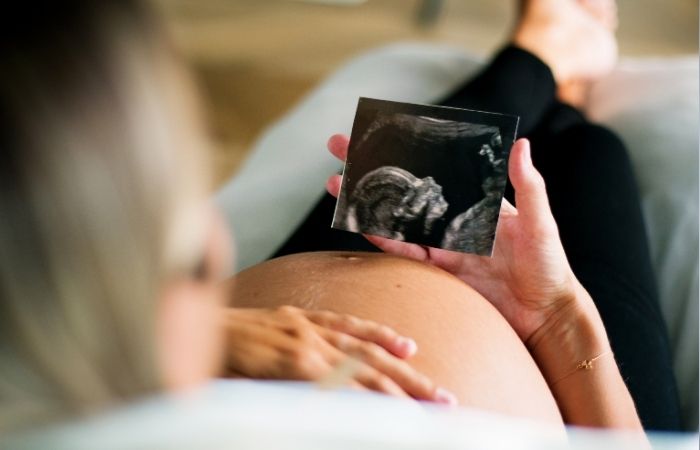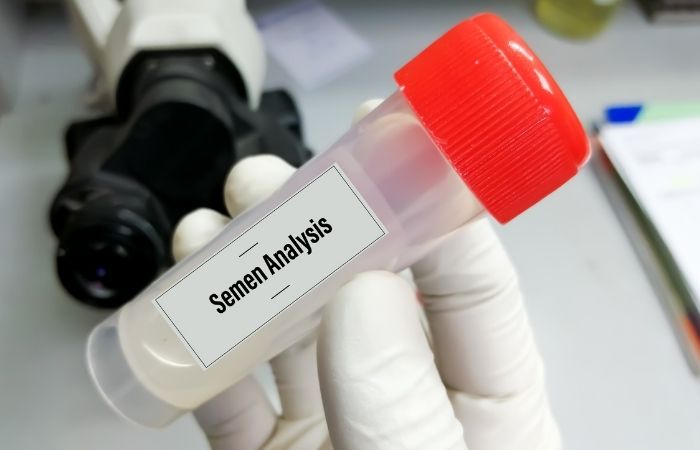How Long Before Chlamydia Affects Fertility? A Breakdown by Stage
Quick Answer: Yes, you can get pregnant after having chlamydia, especially if you got it treated early. But if it isn't treated for a long time, it can cause problems like PID or blocked fallopian tubes that make it hard to get pregnant. The good news is? You can still do things.
Why This Matters: It’s Not Just About Infection, It’s About Timing
If you're reading this, you might be feeling scared, angry, or even betrayed, especially if no one ever told you chlamydia could affect your ability to have kids. Here’s the thing: chlamydia is the most commonly reported STD in the U.S., and it's incredibly sneaky. Up to 70% of women and 50% of men show zero symptoms.
That means people often carry it unknowingly for months or years, and that’s when damage can happen. But, and this part matters, early treatment almost always prevents long-term complications. So no, a single diagnosis does not mean you’ll never have a baby. But ignoring it might.
This article is for anyone who’s had chlamydia, treated it, feared it, or is just now learning about the risks. Whether you're trying to conceive, considering the future, or just looking for peace of mind, we’ll walk you through the science, the stories, and the real-world solutions.

People are also reading: When Endometriosis Symptoms Might Actually Be Chlamydia or PID
What Chlamydia Can Do to Your Reproductive System (And When)
Chlamydia is a bacterial infection that primarily affects the cervix, urethra, and rectum, but if left untreated, it doesn’t stay there. It can spread upward into the uterus and fallopian tubes, causing scarring, inflammation, and something called pelvic inflammatory disease (PID).
Here’s a breakdown of how that damage happens over time:
Figure 1. Timeline of untreated chlamydia and its impact on fertility.
The scary part? You can have this progression without any pain, fever, or noticeable discharge. That’s why routine testing is crucial, especially before trying to conceive.
According to the CDC, untreated chlamydia leads to PID in up to 15% of women, and PID is one of the leading causes of preventable infertility in people with uteruses.
“I Didn’t Even Know I Had It”
Lexi, 31, had no idea she had chlamydia until a pre-IUI fertility screening flagged it. She and her wife had been trying to conceive for over a year. “I was floored,” she said. “I hadn’t had symptoms. No red flags. But the infection had been there long enough to mess up one of my fallopian tubes.”
“I felt so guilty, like I had failed before I even got started,” she shared. “But my doctor told me we caught it in time, and we had other options.”
Lexi’s case wasn’t unique. Many people only discover past chlamydia damage when they start fertility treatment. But catching it late doesn’t always mean it’s too late. One good fallopian tube, a clear uterus, or modern fertility support can still make pregnancy possible.
What matters most? Knowing what you're working with, and not waiting until it’s a problem.
How Chlamydia Impacts Fertility: The Science Behind the Struggle
Getting pregnant isn’t just about eggs and sperm, it’s about timing, function, and flow. And chlamydia, when left untreated, can throw off all three.
Here’s how:
- Egg release is unaffected, you’ll still ovulate. But if the infection caused scarring in your fallopian tubes, the egg may never reach the uterus.
- Sperm may hit roadblocks, inflammation or scar tissue can make it harder for sperm to reach the egg, or for a fertilized egg to travel safely.
- Implantation can be disrupted, if chlamydia caused damage inside the uterus, the embryo might not implant properly, increasing miscarriage risk.
The big risk? Blocked fallopian tubes. If one or both tubes are scarred shut, natural conception becomes much harder, or in some cases, impossible without medical help. In other cases, a fertilized egg may get stuck, leading to an ectopic pregnancy, which can be life-threatening and always results in pregnancy loss.
That’s why OB-GYNs take a chlamydia history seriously when you’re trying to conceive. It’s not just about the infection, it’s about what it may have left behind.
But I Feel Fine. How Would I Know If Chlamydia Affected My Fertility?
This is one of the hardest parts: you might never feel a thing. Chlamydia doesn’t usually announce itself with pain or symptoms, especially when it comes to reproductive damage. You could go years without realizing anything is wrong... until you try to get pregnant.
Still, there are a few red flags that might suggest your fertility has been affected:
Figure 2. Subtle signs that chlamydia may have affected fertility.
If any of these apply to you, it’s not a death sentence for your fertility, but it’s a signal to take next steps. Knowledge is power. And testing is the first step toward answers.
Let’s Not Forget the Guys: Chlamydia Can Impact Male Fertility Too
We talk a lot about how chlamydia affects the uterus and tubes, but it doesn’t spare people with penises either. In fact, untreated chlamydia can reduce sperm quality, cause inflammation in the testicles (called epididymitis), and lead to blockages in the sperm delivery system.
Symptoms in men are more likely to appear, burning while peeing, discharge, pain, but even then, many cases still go unnoticed.
Here’s what chlamydia can do to male fertility:
- Lower sperm count
- Reduce motility (how well sperm swim)
- Cause DNA damage in sperm cells
- Block sperm from reaching semen during ejaculation
If you or your partner have a history of chlamydia, a semen analysis can help spot any lingering effects. The good news? Many chlamydia-related issues in men can improve or reverse after treatment, especially if caught early.

People are also reading: Trichomoniasis Symptoms in Women vs Men
Diagnostic Tools: How to Check for Damage Before You Try to Conceive
If you’ve had chlamydia and are now trying (or planning) to get pregnant, you don’t have to go in blind. Modern fertility medicine offers a range of tests that can check for internal damage, even if you feel totally fine on the outside.
Figure 3. Common fertility tests used after a chlamydia diagnosis.
These tests aren’t about shaming or panicking. They’re about getting the full picture, so you can make choices with clarity, not confusion. If something is off, your doctor can help you figure out whether surgery, IVF, or lifestyle shifts can improve your odds.
Can Fertility Return After Chlamydia? Here's the Honest Answer
Let’s get this out of the way: yes, it’s possible to conceive after chlamydia, even if you’ve had complications. But recovery isn’t a straight line. It depends on what damage was done, how early it was treated, and what kind of support (medical or emotional) you have along the way.
Here’s what the research and real-life experience tells us:
- If you caught the infection early and treated it completely? Your fertility risk is almost zero.
- If you had PID or confirmed tubal scarring, your chances might drop, but they’re not gone.
- If only one fallopian tube is affected, you can still get pregnant naturally. It might just take longer.
- If both tubes are blocked, IVF is often the best route, bypassing the tubes entirely.
For people with uteruses, fertility after chlamydia is about location, timing, and damage control. For people with penises, it’s about inflammation, sperm quality, and post-treatment testing.
Translation? A chlamydia diagnosis isn’t the end of your fertility story. It just means you might need a few more chapters, and a good doctor helping you write them.
Treatment, Timing, and Trying Again: What to Know Before You TTC
If you’ve had chlamydia and want to try conceiving, here’s the step-by-step checklist to protect your health and boost your chances:
- Make sure the infection is completely gone. Retest 3 months after treatment, even if you have no symptoms. Reinfection is common and often silent.
- Talk to your doctor about fertility testing. Ask specifically about tubal health, hormone levels, and semen analysis. Don’t wait until you’re six months into trying.
- Get checked for other STDs. If you’ve had chlamydia, other infections like gonorrhea or trichomoniasis could also affect fertility.
- Time intercourse based on ovulation. This might sound basic, but when tubal function is compromised, timing becomes critical.
- Don’t ignore pelvic pain, spotting, or unusual discharge. These could signal complications like recurrent PID or an ectopic pregnancy.
This isn’t about fear, it’s about strategy. If fertility is your goal, prevention becomes part of your plan. And that includes STD testing, partner testing, and follow-up conversations you might not feel ready for, but will absolutely be glad you had.
Partnership, Pregnancy, and Prevention After Chlamydia
Let’s talk about what happens after the diagnosis. Whether you’re planning a baby with a partner, doing it solo, or navigating assisted reproduction, your fertility journey is about more than biology. It’s about trust, safety, and shared responsibility.
Here’s how to bring your partner into the plan:
- Both partners should get tested, including HIV, syphilis, and gonorrhea. This protects future pregnancy and prevents reinfection.
- Talk openly about fertility fears. It’s OK to say “I’m scared this might affect us.” Vulnerability here = strength.
- Use protection until your doctor gives the green light. Even if you’re trying to conceive, untreated infections can sabotage your progress.
- If you’re doing IUI or IVF, ask your clinic to screen both of you for latent infections. Some clinics skip this step unless you ask.
You don’t need a perfect reproductive system to get pregnant, you need the right information, a good care team, and a partner (or donor, or doc) who respects the journey.
The Emotional Recovery: Letting Go of Shame, Holding On to Hope
There’s a special kind of grief that comes with fertility fears, especially when they're tied to an STD. You might blame yourself. You might feel dirty, ashamed, or furious that no one warned you sooner.
But here’s the truth: chlamydia doesn’t make you careless. It makes you human. And discovering it didn’t erase your worth, or your right to have a future that includes family, if that’s what you want.
You are allowed to be sad and hopeful at the same time. You are allowed to ask hard questions, take up space in a doctor’s office, and demand testing even if you're “just checking.”
Most of all, you are allowed to recover, and to rebuild, not just your fertility, but your trust in your body.
FAQs
1. Can you still get pregnant after chlamydia?
Yes, and many people do. If you treated it early, chances are you’re in the clear. Even if it took a while to diagnose, it doesn’t automatically mean you’re infertile. Some folks take a little longer to conceive, others need a bit of help, but it’s not game over.
2. How long should I wait to try for a baby after having chlamydia?
Doctors usually say to wait until treatment is complete and you’ve retested negative, typically about 3 months after antibiotics. That gives your body time to heal and protects against reinfection if your partner’s being treated too. You want a fresh start, not a back-and-forth infection cycle.
3. Does chlamydia always mess with fertility?
Nope. That’s one of the biggest myths. Most people who get treated early never see a fertility issue. But if it lingers undetected, it can sneak into your uterus or fallopian tubes and cause scarring. That’s where the risk shows up, quiet, slow, and totally preventable with regular testing.
4. How would I even know if it affected my fertility?
Honestly? A lot of people don’t find out until they’re trying to conceive. But if you’ve had pelvic pain, a past ectopic pregnancy, or have been trying for 12+ months with no success, those could be signs. Still, it’s not something you can self-diagnose, get checked before jumping to conclusions.
5. Can you get pregnant with just one working fallopian tube?
Yep. You only need one open tube and one ovary to make it happen naturally. If the other side’s blocked or damaged from a past infection, your chances might be lower, but not gone. Plenty of people get pregnant with one tube. Your body’s more capable than you think.
6. What about men? Can chlamydia mess with their fertility too?
For sure. It can reduce sperm count or mess with motility, basically, how well they swim. Sometimes it causes swelling or pain in the testicles. The kicker? Most guys don’t know until they test. If you’ve got a partner with a penis, they need to get checked too. Fertility is a team sport.
7. What tests should I ask for if I’m worried?
Start with an HSG (to check your tubes), AMH bloodwork (to estimate egg reserve), and a semen analysis if there’s a male partner. These are your intel-gathering tools. The more you know, the better you can plan.
8. Can the damage be reversed?
Sometimes, yes. Mild inflammation or scarring can heal. Other times, you might need help like surgery or IVF. Either way, don’t assume the worst, people get pregnant with “compromised” fertility all the time. Medicine has come a long way.
9. Is it risky to try naturally after having chlamydia?
Not risky, if you’ve been treated and retested. Just make sure everything’s clear first. If one or both tubes are blocked, natural conception might not work, but you’re not out of options. IVF skips the tubes completely.
10. I feel ashamed I didn’t catch it sooner. Is that normal?
Totally. And it’s also unnecessary. Chlamydia is sneaky, most people never feel a thing. You didn’t mess up. You didn’t fail. You’re doing the brave, hard thing by asking questions and taking action. That’s what matters.
Your Fertility Isn’t Over, It’s Just Starting With the Truth
Here’s what chlamydia doesn’t get to decide: your worth, your future, or your ability to have a child. Whether you’re trying now or just planning ahead, knowledge is your power, and early action is your protection.
This at-home STD test kit lets you check your status without waiting rooms, paperwork, or awkward conversations. If you’re thinking about pregnancy, now or someday, it’s one of the best first steps you can take.
Your fertility story doesn’t end with a diagnosis. In fact, it might just be beginning.
How We Sourced This Article: We used over a dozen trusted medical and reproductive health sources to write this guide, including clinical studies and fertility practice guidelines. To keep it practical and accurate, we prioritized recent research and real-world data. Below are five of the most relevant sources.
Sources
2. Chlamydia Fact Sheet – World Health Organization
3. Effects of Chlamydia trachomatis Infection on Fertility | PMC
4. Chlamydia infection, PID, and infertility: further evidence from BMC Women’s Health
5. Chlamydia STI Treatment Guidelines – CDC
About the Author
Dr. F. David, MD is a board-certified infectious disease specialist focused on STI prevention, diagnosis, and treatment. He blends clinical precision with a no-nonsense, sex-positive approach and is committed to expanding access for readers in both urban and off-grid settings.
Reviewed by: L. Emeka, FNP | Last medically reviewed: September 2025
This article is for informational purposes and does not replace medical advice.







